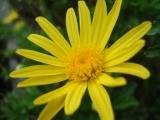Wednesday, October 31, 2007
Thursday, October 25, 2007
Halloween webquest
Hi there again!
In class we are going to go on an adventure through halloween traditions.
Click on the link below and enjoy yourself:
Publicada por
prof. odete viana
em
12:14 PM
13
comentários
![]()
Great link!
Hi, kids!
I found this interesting and funny activity about animals and I want to share it with you!
Follow this link and design your own ZOO!!
Have fun!
Publicada por
prof. odete viana
em
11:59 AM
2
comentários
![]()
Monday, October 15, 2007
Animal Jumble
Unscramble each of the clue words.
rohse __ __ __ __ __
Publicada por
prof. odete viana
em
11:30 AM
3
comentários
![]()
An essay by RAQUEL SOARES, 8ºG
Tropical forest

The tropical forest occurs in three regions on Earth:
in America, in Africa and indo-Malaya.
This bio-system is composed of a great amount of vegetal species and animals, the annual average temperature is always around 20°C, and the annual rainfall is approximately of 1200mm.
Its average localization is in the band between the tropics, therefore, the denomination of tropical forest.
One of the main characteristics of the tropical forest is vegetal and animal biodiversity.
Around 60% of all the species of the planet are found in this ecosystem.
An example of a tropical forest is the Amazon forest.
Raquel Soares
8°G n°24
Publicada por
prof. odete viana
em
11:22 AM
0
comentários
![]()
Etiquetas: students' works
Friday, October 12, 2007
Wild Animals!!!!
Anacondas don’t grow as long as some pythons, but their incredible thickness makes them the heaviest snakes in the world. They live in South America, usually near swamps and rivers. They are excellent swimmers, and feed on animals like wild pigs, huge rodents called capybaras, and even jaguars!!
In the wild, a green anaconda generally lives an average of ten years.
Publicada por
prof. odete viana
em
12:13 PM
0
comentários
![]()
Etiquetas: students' works
Tuesday, October 09, 2007
happy birthday!!!!!!!
Publicada por
prof. odete viana
em
2:40 PM
3
comentários
![]()
"Pollution"
Our friend PAULA CERQUEIRA, from the 8th grade, class G, wrote this essay about pollution. In some way, it has something to do with the themes we have been discussing in class.
Good work Paula!

"What is pollution?
Pollution is the introduction of pollutants into the environment which results in deleterious effects of such a nature as to endanger human health, harm living resources and ecosystems.
What are the major forms of pollution?
There are 3 major forms of pollution: air pollution, water pollution and noise pollution.
Air pollution: a biological agent that modifies the natural characteristics of the atmosphere. The greatest source of air pollution is actually mobile sources.
Water pollution: a large set of adverse effects upon water bodies such as lakes, rivers, oceans, and groundwater caused by human activities. Some water pollutants are insecticides, chemical waste and fertilizers.
Noise pollution: is displeasing human or machine created sound that disrupts the environment. The dominant form of noise pollution is from transportation sources, mainly motor vehicles.
How can we stop pollution?
To stop pollution we must recycle, reuse, use the natural resources in conscientious way, preserve green spaces and install devices in factories
that hold back the smokes and the gases."
Publicada por
prof. odete viana
em
2:03 PM
0
comentários
![]()





